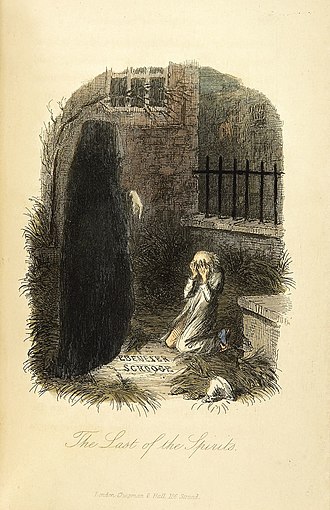A Haunting History
- Posted in:
- Heritage
With many historic sites in Nottinghamshire having long histories, it is no surprise that many are said to be haunted.
Stories of ghosts and hauntings have been around in different forms for centuries. They were perhaps as popular in contemporary times as they are now. These stories provide a valuable, and often tangible, link between the living and dead. In some cultures, these spirits are evil, intending to cause harm to the living, and in others, spirits are kind and protect the living. As we see in our media today, sometimes spirits can have both good and bad intentions as well.
Tales of ghosts and spirits are useful to us as they offer us a window into contemporary societies, usually taking the form of a moral messages or warnings. The nature of the spirits, and the messages they are meant to be the manifestation of, evolves as societies do, creating a snapshot of their social and religious beliefs, their ideas of social justice, and even their shared fears. They can also allow us a glance into contemporary views on gender, class, and identity. They are a valuable piece of history that can often be overlooked.
Ancient civilizations across the world such as ancient Mesopotamia, ancient Greece, and ancient Egypt all have tales of restless spirits weaved into their folklore, mythologies, and oral stories. Spirits in ancient Mesopotamia, for example, were often believed to be capable of causing genuine injury to the living and many attempted to keep them at bay with routine offerings and rituals. The responsibility to appease the spirits fell upon their direct descendants, and any family members that neglected to provide offerings of food and drink to their dead relatives were at risk of being cursed with disease or bad fortune. This shows what their society placed value in and well as what they feared.
Later in Medieval England, tales often reflected Christian religious values, with both Catholicism and Protestantism using spirits in their teachings. The threat of your soul wandering through purgatory was a real threat for some in Medieval society while others believed that ghosts were apparitions to trick the living into evil temptation. Staying away or atoning from sin was a predominant and pivotal message. We also see this message in literary hauntings, in works such as Shakespeare’s Macbeth and Hamlet. These stories were often meant as warnings for deviating from religious or societal values, showing us the consequences of this deviation.

Above: The Last of the Spirits, from Charles Dickens: A Christmas Carol, 1834. Illustration by John Leech, Public Domain
The Victorian era, however, was the catalyst for our love of horror stories. Their fascination with death, ghosts, and all things macabre still resonates into our modern society. Haunted houses and horror theatre, known as Phantasmagoria, began to be popular during this period. This was also the time of popular gothic literature such as the poems by Edgar Allen Poe, Mary Shelley’s Frankenstein and Bram Stoker’s Dracula. With mortality rates rather high during this period, it seems that embracing death, and the idea of ghosts, was a way of helping society cope with the common occurrence of death. We also continue to see the theme of ghosts appearing in stories preaching moral values during this era, both in stories of ‘real’ ghosts and of literary ghosts, such as in Dickens’ A Christmas Carol.
Modern media has allowed us to create, engage with, and disseminate ghost stories on a larger scale than ever before, be it horror movies and tv shows, social media videos, ghost tours and attractions, or almost anything else under the umbrella of popular culture. What do you think our 21st century ghost stories will tell the historians of the future about us? Do we use horror stories as a way of coping with the current state of our world? Do we see them as warnings? Do we just enjoy them as pieces of art or media, meant to shock and scare us?
Many sites in Nottinghamshire such as Annesley Hall, Wollaton Hall, and Rufford Abbey, are often quoted as having spirits roaming their halls. Many of these historic buildings said to be haunted in Nottinghamshire are open to the public, so if you fancy some spooky heritage this Halloween we would recommend a visit!
Wollaton Hall, for example, is said to be haunted by ‘The White Lady’, also known as Lady Jane Middleton. Her ghost story states that she was accidentally paralysed and kept confined to her room in Wollaton Hall until she died, subsequently haunting the hallways of the house. Strange lights can be seen from her bedroom and visitors are said to have heard, seen, and felt her presence. The portrayal of 'White Lady' spirits in folklore can be traced back to the Medieval period, with these lady ghosts often being attached to manor houses or noble families, especially within a rural setting. Their stories often depict tragedies, such as accidents, unrequited love or harrowing deaths, and they are said to sometimes be bad omens. There is a little truth wrapped in the 'White Lady' tale of Wollaton Hall. Wollaton Hall was owned by the Willoughby family since it was built in the 1580’s up until 1925, with the title of Baron Middleton being passed on by the Hall’s owners since 1688. The 6th Baron Middleton, Henry Willoughby, did marry a Jane Lawley who died around 1852. Unfortunately, not much is written about her, but her ghost story is likely rather dramatized and embellished. That does not stop many ghost investigations taking place at the house in search of ‘The White Lady’.
Beyond their historical significance, ghost stories challenge us to look at our own beliefs. As it did throughout history, the ability to engage and share in these stories helps bind communities and groups together. They can also create a link between us in the modern day and historical individuals, families or societies. In some cases, they can create a link between us and our own ancestors. So, whether you believe in ghosts or not, their impact and influence cannot be denied.
